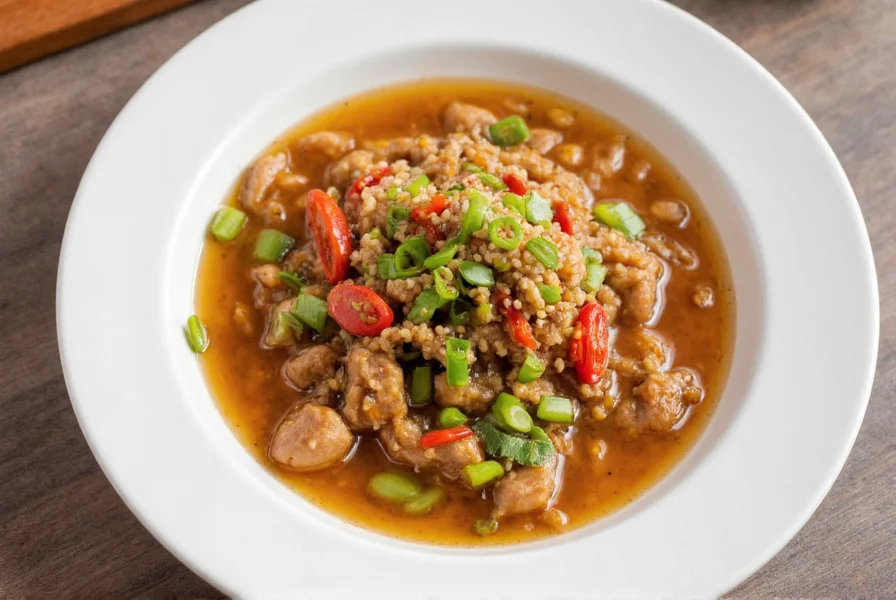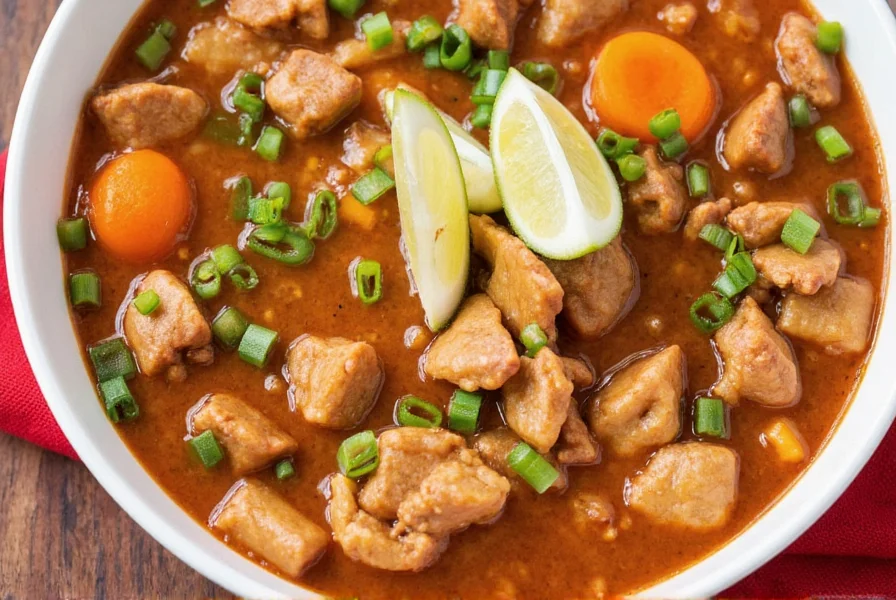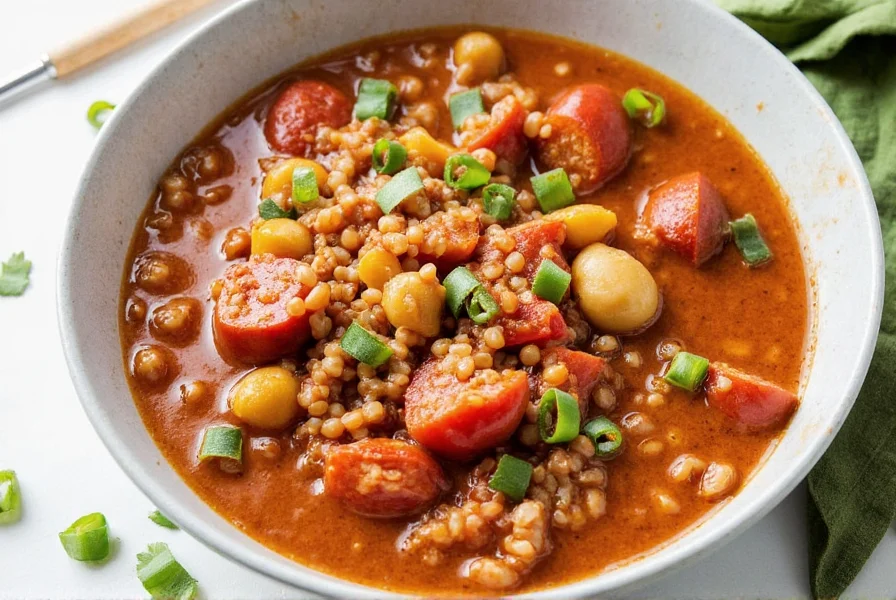If you're looking for an authentic Bo Kho Vietnamese recipe that delivers rich, aromatic flavors with minimal fuss, you've come to the right place. This step-by-step guide covers everything from ingredient selection to perfecting the simmering process, ensuring restaurant-quality results in your own kitchen.
Bo Kho Vietnamese Recipe: Step-by-Step Guide

Ingredients
- 2 lbs beef chuck, cubed
- 2 tablespoons vegetable oil
- 1 onion, sliced
- 3 garlic cloves, minced
- 1 stalk lemongrass, bruised
- 2 carrots, peeled and sliced
- 1 tomato, chopped
- 1 cinnamon stick
- 2 star anise
- 3 cloves
- 1 thumb-sized ginger, sliced
- 2 tablespoons fish sauce
- 1 tablespoon soy sauce
- 1 teaspoon sugar
- Water or beef broth, as needed
Instructions
- Heat oil in a heavy pot over medium-high heat. Brown beef cubes in batches until deeply seared on all sides (about 3-4 minutes per side). Remove and set aside.
- Add onions and garlic to the pot. Sauté until fragrant (1-2 minutes), scraping up browned bits from the bottom.
- Toast whole spices (cinnamon, star anise, cloves, ginger, lemongrass) in the pot for 1 minute until aromatic. Pro Tip: Always toast spices in oil to unlock maximum flavor before adding liquids.
- Return beef to the pot. Add fish sauce, soy sauce, and sugar. Stir well to coat everything evenly.
- Pour in enough broth to cover ingredients by 1 inch. Add carrots and tomatoes. Bring to a gentle simmer.
- Cover and cook on low heat for 1.5-2 hours until beef is fork-tender. Stir occasionally to prevent sticking.
- Remove whole spices (cinnamon, star anise, cloves, lemongrass) before serving. Adjust seasoning with extra fish sauce or sugar if needed.
- Serve hot with crusty baguette, rice noodles, or jasmine rice. Garnish with fresh cilantro and sliced chili peppers.
Key Spices for Authentic Bo Kho
| Spice | Flavor Profile | Role in Bo Kho |
|---|---|---|
| Star Anise | Sweet licorice-like taste | Adds complexity and depth; mimics five-spice powder notes |
| Cinnamon Stick | Warm, earthy sweetness | Softens the broth and adds subtle richness |
| Ginger | Spicy, zesty, slightly floral | Provides heat and cuts through richness |
| Lemongrass | Citrusy, herbal aroma | Infuses brightness and lifts overall flavor |
| Cloves | Strong, sweet-earthy | Used sparingly to enhance warmth and roundness |
| Fish Sauce | Salty, umami-rich | Base layer of flavor and saltiness |
Spice Storage Best Practices
To maintain peak flavor for future batches:
- Store whole spices in airtight amber glass jars away from heat and light (pantry cabinets work best)
- Grind spices fresh using a manual grinder like the OXO Good Grips for maximum aroma
- Label and date all jars — whole spices last up to 4 years, ground spices 2-3 years
- Never refrigerate spices (moisture causes clumping and flavor loss)

Frequently Asked Questions
What makes Bo Kho different from regular beef stew?
Bo Kho uses distinct Vietnamese ingredients like lemongrass, star anise, and fish sauce instead of European herbs. It has a citrus-forward profile with warm spices rather than tomato-based richness.
Can I substitute fish sauce in Bo Kho?
Yes — try soy sauce with 1/4 tsp anchovy paste per tbsp of fish sauce, or a 1:1 mix of soy sauce and Worcestershire sauce. For vegetarian options, use mushroom soy sauce or diluted miso paste.
How long does Bo Kho stay fresh?
Stored in an airtight container, Bo Kho lasts 3-4 days in the fridge. The flavors improve overnight as spices meld. Always reheat to 165°F (74°C) before serving.
Master Bo Kho Like a Pro
Authentic Bo Kho isn't just about following steps — it's about understanding how each spice contributes to the symphony of flavors. By prioritizing fresh ingredients, proper spice storage, and precise simmering techniques, you'll create a dish that's both comforting and complex.
Remember: Great Vietnamese cooking starts with respect for ingredients. Treat your spices with care, and every bowl of Bo Kho will tell a story of tradition and care.











 浙公网安备
33010002000092号
浙公网安备
33010002000092号 浙B2-20120091-4
浙B2-20120091-4